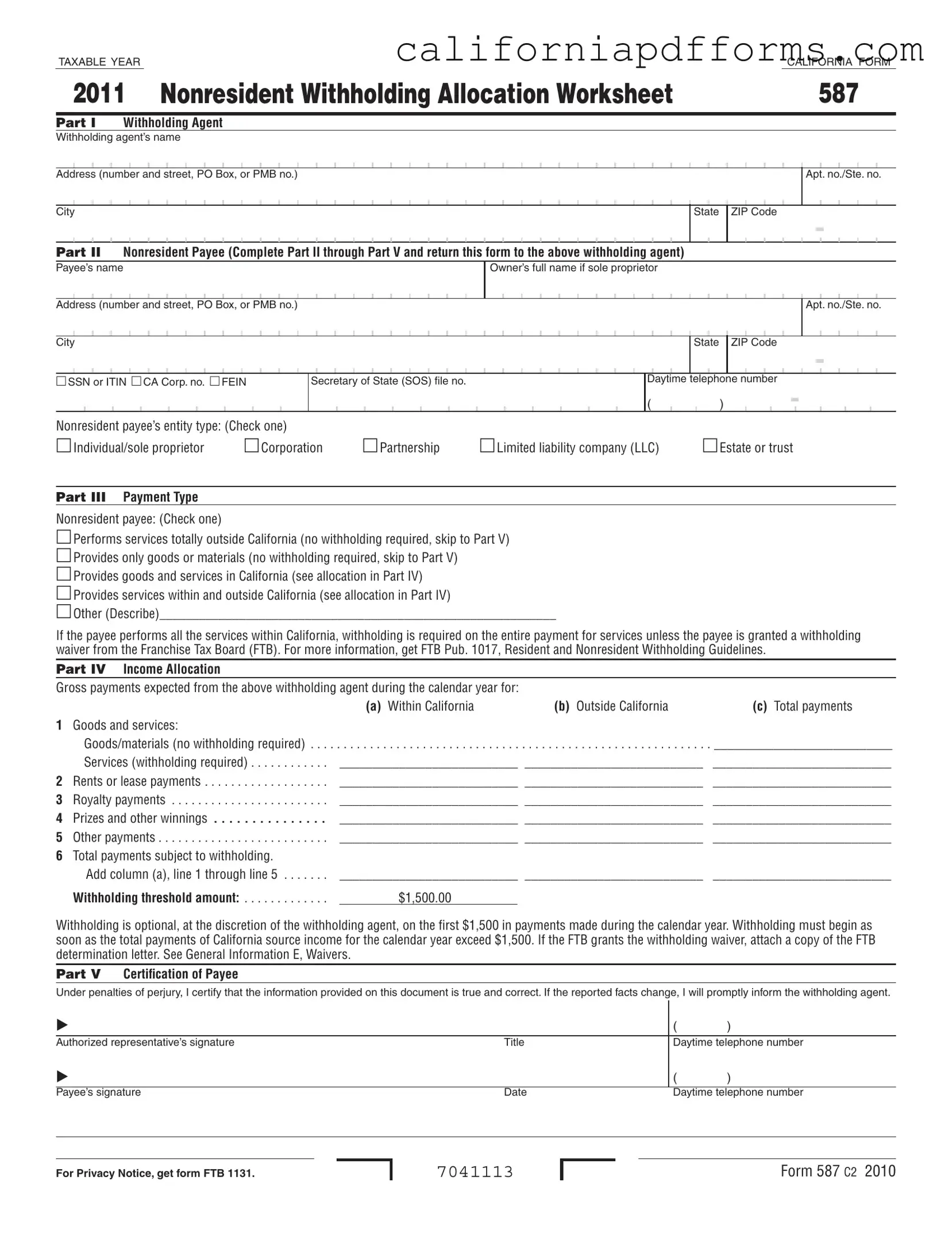California Form 587, also known as the Nonresident Withholding Allocation Worksheet, is used to determine the amount of withholding required on payments made to nonresidents. This form is essential for withholding agents to ensure compliance with California tax laws when making payments to nonresident individuals or entities.
Form 587 must be completed by nonresident payees who receive payments from a withholding agent for services performed in California. This includes individuals, corporations, partnerships, limited liability companies (LLCs), estates, and trusts. The withholding agent must also fill out Part I of the form before providing it to the payee.
When is withholding required?
Withholding is required when total payments of California source income to a nonresident exceed $1,500 during the calendar year. If the total payments are $1,500 or less, no withholding is necessary. Payments subject to withholding include:
-
Services performed in California
-
Rents for property located in California
-
Royalties from activities in California
-
Prizes for contests entered in California
What types of payments are exempt from withholding?
Payments not subject to withholding include those made to California residents or entities with a permanent place of business in California. Additionally, payments for goods purchased, services performed outside California, or to tax-exempt organizations are also exempt.
How does a nonresident payee request a withholding waiver?
A nonresident payee can request a withholding waiver by using Form 588, Nonresident Withholding Waiver Request. If the Franchise Tax Board (FTB) grants a waiver, the payee must attach a copy of the determination letter to Form 587.
Part IV is used to allocate income between payments made for services performed within California and those performed outside California. The payee must provide the expected gross payments in three columns: payments within California, payments outside California, and total payments. This section helps determine the correct amount subject to withholding.
Withholding agents must retain completed Form 587 for a minimum of four years. This form should be available for review by the FTB upon request. It remains valid for the duration of the contract or term of payments unless there are material changes in the facts.
If any reported facts change, the payee must promptly inform the withholding agent and may need to submit a new Form 587. This ensures that the withholding agent has the most accurate information for compliance purposes.
For more information, you can visit the California Franchise Tax Board's website at ftb.ca.gov. You can also contact their Withholding Services and Compliance department at 888.792.4900 or 916.845.4900 for assistance.
